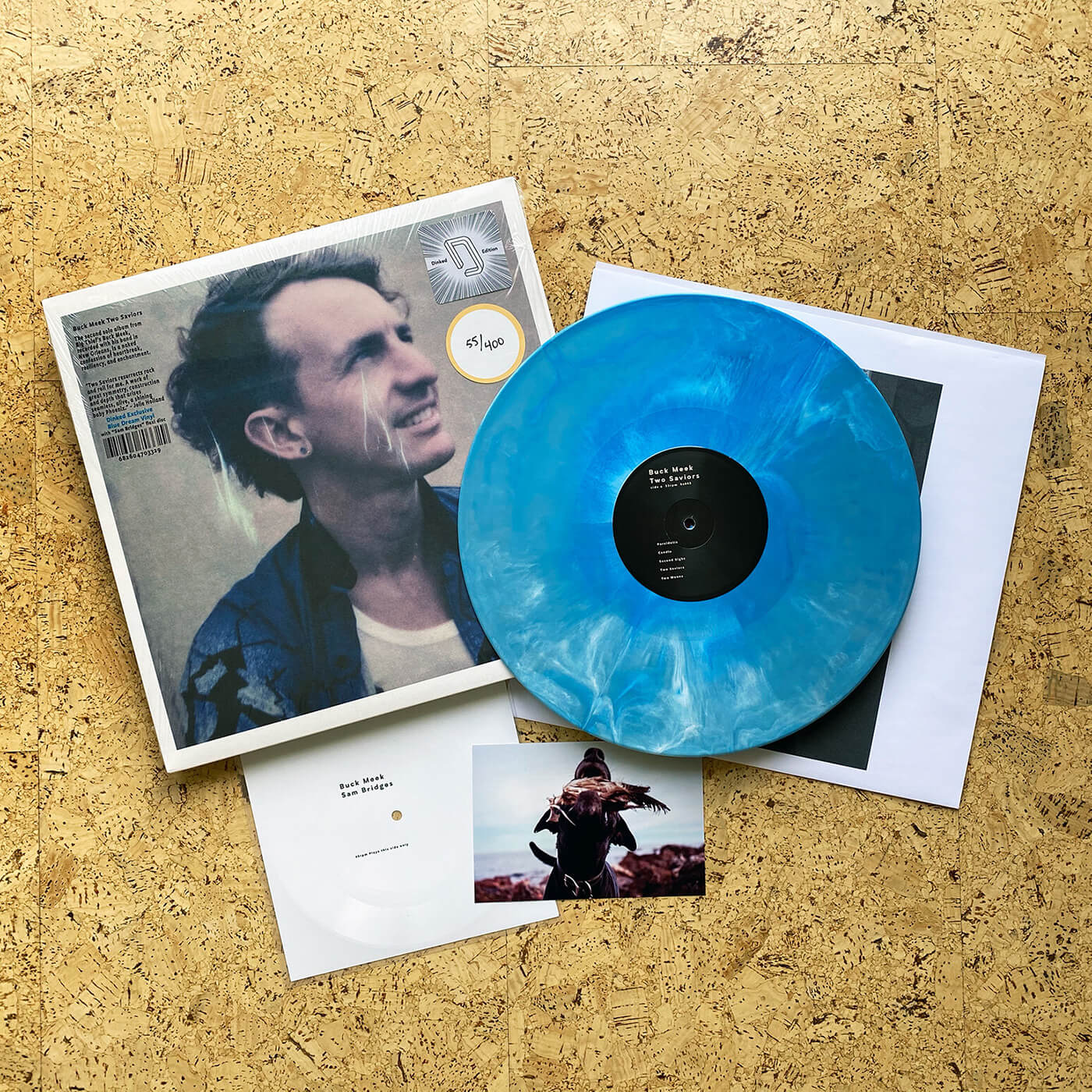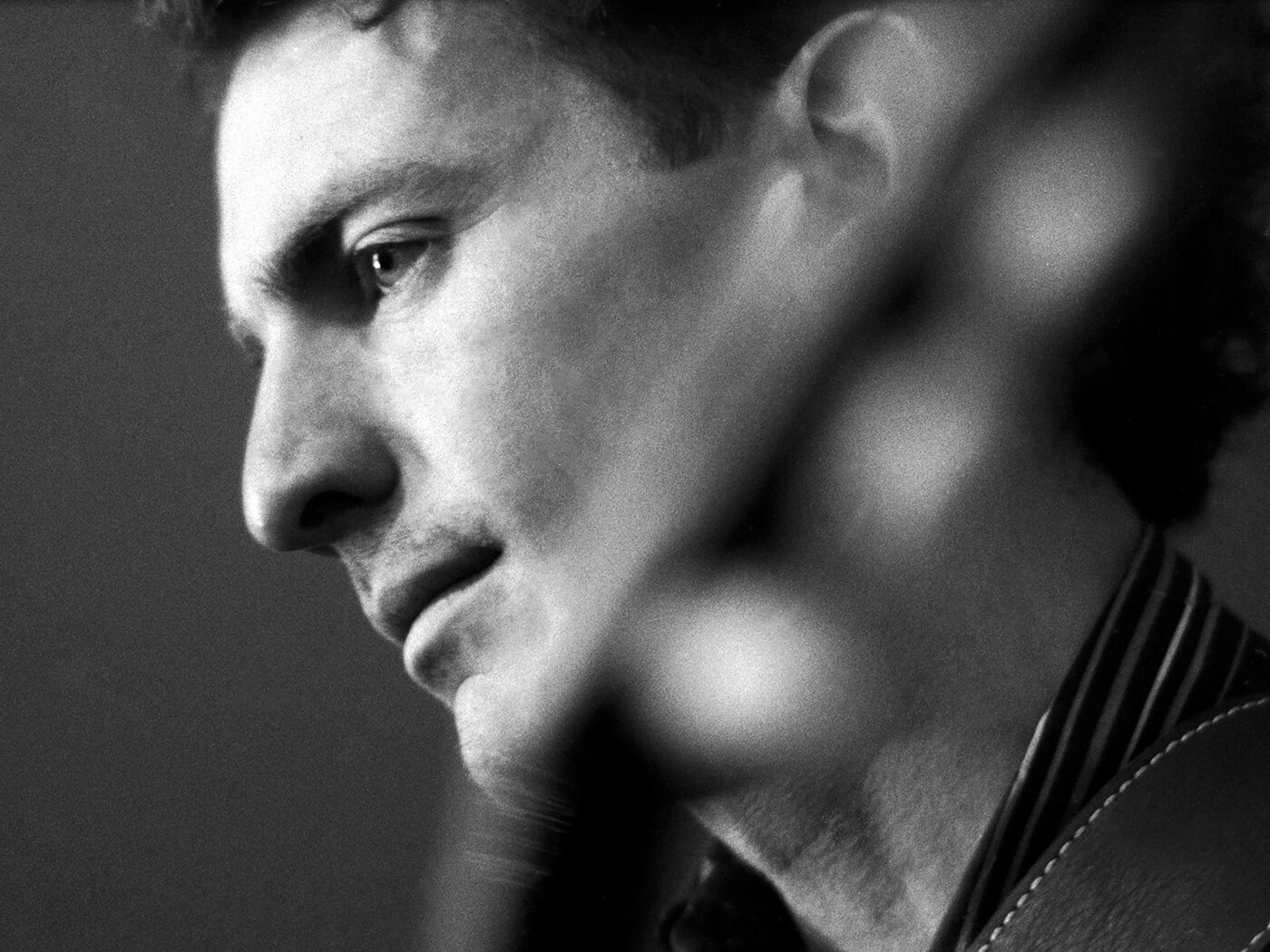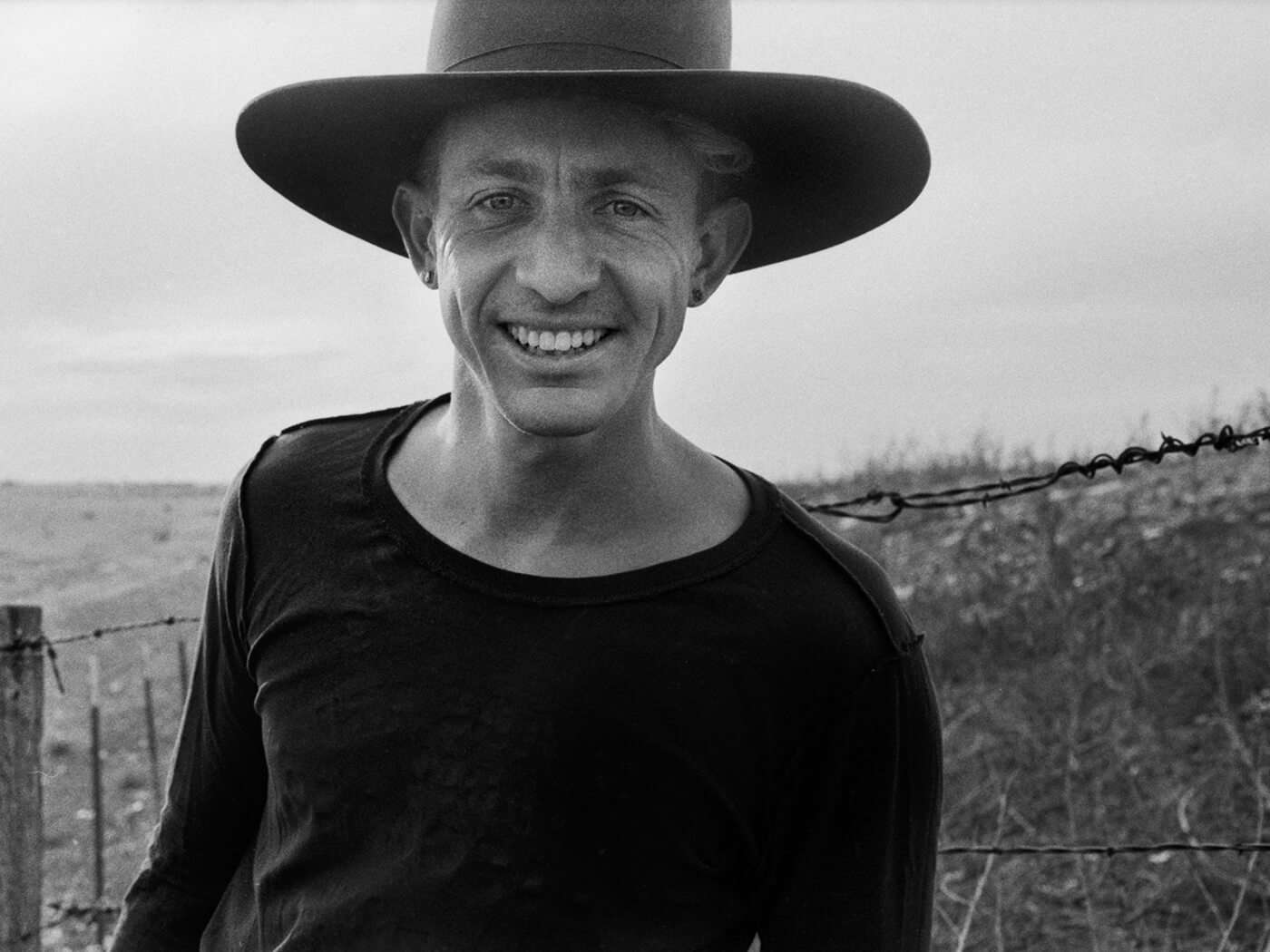“There’s a lack of preciousness that I think is precious”: Big Thief’s Buck Meek on the human connection in new LP Two Saviors
The Texan guitarist explains how the rich musical melting pot of the American Southwest informed his unique playing style and why taking time off meant writing two solo records and a new Big Thief album.

Image: Josh Goleman
“A place affects you on so many levels,” begins Buck Meek reflecting on his second solo album, Two Saviors, recorded a stone’s throw from the Mississippi amid the sapping humidity of a New Orleans summer. It was the latest stop on a journey that’s carried the amiable Texan guitarist back and forth across the United States, developing a consummate playing style that’s a distillation of the nation’s rich musical heritage.
Along the way, Meek’s released four albums in as many years with New York collective Big Thief and a pair of timeless solo records. For now, home is a cabin nestled in a bay tree forest in Topanga Canyon, California. Outside, the slopes are scattered with wild sage and at dusk Meek watches through binoculars as hawks and owls swoop down upon their prey. In summer, he surfs by moonlight in the Pacific, tides of bioluminescent algae turning the waves neon blue. Today, enveloped in a red ski jacket as steam rises from the stove, Meek is flanked by his koa 1926 Martin 0-18 and a boutique ‘Flippercaster’ built by Dutch luthier Flip Scipio. It’s the definition of idyllic calm.
Buck Meek’s guitar journey began in Wimberley, Texas, his mother teaching him his first chords on her 1976 Yamaha acoustic, before he picked up a Squier Strat from Rockin’ Robin Guitars in Houston. Immersed in the sounds of jazz, country and blues, the musical diversity of America’s Southwest began to coalesce in a style bordering on virtuosity, later honed at Berklee College Of Music.
“There was a really cool synthesis of old-school country, Manouche jazz, Romanian music, Western Swing and blues,” he remembers. “I fell in with this group of players like Slim Richey. Brandon Gist, a great blues player in Austin, took me under his wing, too. All these things were synthesising together and I got really into Albert King and Stevie Ray Vaughan. When I was 16, I met Django Porter, a disciple of Django Reinhardt, and that’s when I got really serious about acoustic guitar.”
That grounding in acoustic techniques began to bleed into Meek’s electric playing as he clocked up hundreds of gigs at barbecues, parties and ice houses across the Lone Star State. “So much of that approach is about pick attack and creating resonance with your right hand,” he says. “Your right hand is floating above the soundboard, you almost have this natural reverb and decay. You’re using mostly downstrokes and syncopation, even with really fast lines, which creates natural hesitation and swing. There’s also a lot of vibrato, but you really have to fight it because there’s so much more tension than with an electric. Learning how to fight the guitar affected my playing a lot.”
Back to school
Meek’s next move was east to Berklee, where future bandmate Adrianne Lenker had arrived on a scholarship provided by Susan Tedeschi. Setting out to develop his jazz playing, Meek had “an existential crisis”, struggling to rediscover the elemental joy he’d found at home in the hill country.
“Eventually, I found a teacher, David Tronzo,” he recalls. “He helped me reconnect with a more emotional, conceptual landscape on the guitar and come into my own original form, embracing who I was to create something new outside of genre.”
Moving on to Brooklyn, Meek ran into Lenker by chance, the pair quickly developing a common guitar language before taking off to tour the States in a 1987 Chevy G20 van. They named their duo Buck And Anne.
“I loved her sense of invention,” Meek remembers. “She works in so many alternate tunings, a new tuning almost every time she writes a song. Her sense of rhythm is so strong and fluid, with so many interweaving picking patterns and a complex sense of harmony, but all centred around the song. She’s constantly changing time signatures, but it doesn’t feel contrived, it moves with so much swing.
“Her rhythm is very straight, like a train. Coming from a ragtime and Western Swing background, my approach is more syncopated, I play behind the beat. That was one of the first moments of excitement for us, combining those two feels.”

Buck And Anne became Big Thief when fellow Berklee graduates James Krivchenia and Max Oleartchik joined the fold. Debut album Masterpiece arrived in 2016 and three years later the band had four celebrated indie-folk records and a Grammy nomination under their belt. Touring became perpetual, venues were getting progressively bigger and they were due to headline the UK’s End Of The Road festival before COVID intervened.
Their prodigious work ethic was beginning to take a toll, though. After the dates for 2019 albums U.F.O.F. and Two Hands, Meek retreated to Topanga Canyon to start work on Two Saviors. It’s an album of gentle, unhurried beauty and sweet sadness, 11 songs he describes as “prayers and visions from within the constant flux of pain, healing and discovery”. Solo project and band have become mutually dependent.
“Solo, I’m able to hold a more confessional space,” he explains. “That makes me a better player writing parts for Big Thief because it gives me narrative perspective. If the song’s about two lovers driving down the highway and they crash and roll down a hill, my guitar part is going to be the sound crackling through the AM radio from over the Mexican border as they’re bleeding to death upside down on the side of the road.”
Live and dangerous
At the peak of the hottest summer in memory, Buck Meek and his solo band were holed up in a Victorian mansion in New Orleans. Also present was producer Andrew Sarlo. Big Thief’s fifth member has an unswerving belief in instinctive, live recording and installed some non-negotiable conditions for the Two Saviors sessions. Headphones were banned, everything would be captured through eight dynamic mics and a Tascam 38 eight-track, and the musicians would play the set twice each morning, with another run-through in the evening.
“It forces you to tap into your instincts and fills you with adrenaline,” says Meek. “You play from the heart because you don’t have time to think. I’ll never forget when Big Thief made our album Masterpiece, we’d finished, but Adrianne had written this song. Andrew heard her voice memo of it and gave her five minutes on the porch to teach us, then one chance to play it. I was still figuring out the chords during my solo, and that became the title track. There’s an element of danger there.
“The thing I’ve discovered working with Andrew is that often the first take ends up being the most vital. Repeating it 20 times, we’ll get further and further from the source of the song. For me, that’s the greatest victory of this record – it’s the sound of people just making music together, trying to connect as humans. There’s a lack of preciousness that I think is precious.”
Meek’s main guitar on Two Saviors is his Koa Martin 0-18 bought from South Austin Vintage Guitars, along with a Bayard acoustic. Co-guitarist Adam Brisbin, Meek’s “favourite player in the world” borrowed his Collings I-30. “They’re the pinnacle of guitars for me,” says Meek. “My friend Aaron Huff is in charge of the electric guitar department, he has the mind of a rocket scientist. They’re doing something unique, they’ve developed production at the level of the old Gibson factories, 50 or 60 luthiers working as a team with incredible materials, building everything from scratch. I love those guitars, they have a lot of life and spirit but they’re super consistent across the whole fretboard.”
If you’ve witnessed one of Big Thief’s emotionally charged live shows, you’ll also have seen Meek and Lenker plugging into Magnatone Twilighters. Meek believes the 22-watt combo is the perfect companion for his I-30.

“The Collings is intimidatingly lucid,” he says with a knowing smile. “It’s transparent and reveals every nuance of your playing, which can be a dangerous experience. The Magnatone counterbalances that. It can be such a ferocious amp. Combining such a delicate, precise instrument with this wild amplifier feels very naked.”
Sitting atop the Twilighters is a custom-built ‘Whizzer’ device, most audible as Meek and Lenker’s amps are cranked to perilous extremes through the feral, lacerating guitar solo on Two Hands’ standout single Not.
“I had this engineer in Chicago build it, based on Neil Young’s Whizzer, which was basically a robot to turn his volume up and down,” Meek explains. “Mine’s a smaller version with a control voltage cable that has an auxiliary box with robotic potentiometers so I can pre-set gain stages and access them with a pedal. I don’t think you can replicate the sound of a vacuum tube amplifier being pushed beyond its limits to a dangerous degree, where the tubes are swollen with heat. The sound of a guitar amp on the verge of explosion, I don’t think can be recreated.”
Leaning his beloved Martin against the cabin wall for a second, Meek is excited to show off another prized instrument – a ‘Flippercaster’ built by Dutch luthier Flip Scipio, crafter of guitars for Ry Cooder, Jackson Browne and David Bowie.
“It has a 1970s Guyatone pickup that’s super-transparent, a Lindy Fralin Big Single and a cool archtop bridge with a weird Teisco whammy bar,” he says. “It’s wired so the neck position is both pickups in series, and it creates this almost overdrive or fuzz sound because it’s doubling the output. It’s one of the most versatile guitars I’ve ever played.”

Take a break
Listening to Meek wax lyrical about these rarefied instruments and a pedal collection that includes a Hologram Electronics Infinite Jets, Red Panda Particle delay, Death By Audio Reverberation Machine, JHS Colour Box, AnalogMan Sun Face fuzz and Strymon El Capistan, it’s clear guitars are essential to his being. Taking a break this past year has in fact meant writing another solo album to follow Two Saviors, while Big Thief have quietly gone about recording their fifth album. It is, he reveals, “pretty much done” and “certainly different”.
“Lockdown was a well-needed respite, I needed a break, and then Big Thief ended up making new music for nearly six months, which was really nice because we’ve been touring so hard we’ve had little chance to record in the last couple of years.
“This is my seventh or eighth release in eight years and the first time I haven’t been able to go out and share the songs. I’m trying to look at it as an opportunity, probably for the only time, to put out a record then immediately start working on another.”

He’s also about to begin teaching guitar lessons online through Steven Van Betten’s School Of Song and after our conversation, he’s planning to leave the hawks and owls to their own devices and draw up some lesson plans. That break isn’t happening any time soon. In parting, we ask Meek to think back beyond Big Thief, Buck And Anne and Berklee, to the hill country where his six-string adventure began. How has he changed and developed as a player across all those miles he’s travelled?
“Probably the biggest thing is trying to be my favourite guitar player and trying to commit to my own voice,” he says. “Of course, I went through chapters of idolising my heroes. There was a time I was obsessed with Django Reinhardt, learning all of his solos verbatim, or trying to transcribe Billie Holiday vocal parts, but at some point it flipped and I committed to my own voice.
“It’s a vulnerable process and it’s not always what you want it to be, but with enough patience and commitment to your own sound it evolves. It’s a never-ending journey and I try to surprise myself every day. It’s real and it’s a beating heart. That, for me, is the difference.”
Two Saviors is out now via Keeled Scales.
